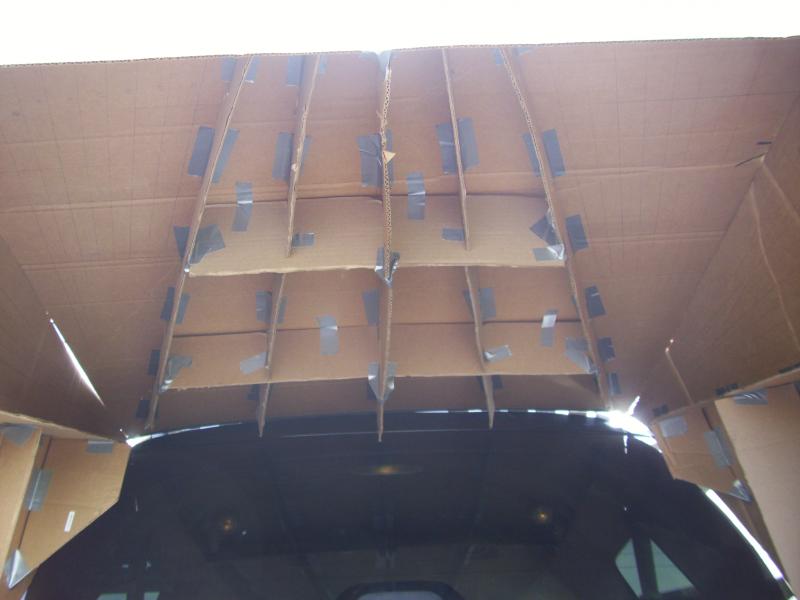Hey guys, it's been a while, but I have some test data. I built a cardboard prototype and did a "coast down" test...not a true coast down test to determine Cd, but I got up to 55mph on a back country road, kicked it into neutral at the same spot every time, and marked the distance I coasted before coming to a complete stop, just to compare data points to each other. I did the test first with nothing on my car, then by adding the cardboard prototype panels, then by varying the angle of the panels to try to find the optimal angles. My assumption: the further I coasted, the better my aerodynamics. All trials were measured in the distance (+ or -) compared to the distance my stock car coasted with no additions. I did all trials in 2 directions on the same stretch of road (East and West). I wish I could have completed more trials for a bigger data set, but what I got already took me 5 hours :/
The first trial to add my prototype cardboard was completed with all panels (top and sides) at 0-degrees (parallel with the direction of travel of the car). Since my stock car (barely) starts to curve inward on the sides and the top, as expected, the zero-degree Kammback made aero worse for all trials. Next, leaving the side panels at 0-degrees, I varied the top panel angle through 5-13 degrees, recording the coast distance each time. The data produced from these tests were good, clean data that yielded expected and fairly conclusive results. Next, the top panel was returned to 0-degrees and the side panels were varied through 5-13 degrees each. It was getting dark as I was starting the side panel tests. The wind was consistent before sunset, but decreased after it started to get dark. Of course, the temperature dropped slightly, too. These side panel tests produced quite inconsistent data, with the coast continually improving with an increasing side panel angle in one direction and continually worsening in the other direction. At the very end, tests in each direction of the stock car coast distance were close to the zero mark heading Eastbound, but were way off heading Westbound, confirming that conditions outside changed enough to mess up my data.
Though I didn't obtain a huge data set for the top panel angle changes, those results looked good, so I don't think I'll take the time to re-do those tests. Plus, as I expected based on research and the template that roughly a 9-degree angle would be best, and I found through testing that 7-9 degrees is best, I'm happy with that result.
I plan to re-do the side panel testing, however. Since the sides of my car bulge out before the back wheel and then curve back inward on the bottom half and the top half of the car side is quite flat, I really don't know what angle to expect as the best for the side panels...hence testing. Below are some pictures and the data. I'll try to get back with more test results and keep y'all updated as I begin "permanent" kammback construction.
First time trying pictures...hopefully this works.
Test Data

Pretty Graphs for top panel angle adjustment

Not-so-pretty graphs for the side panel angle adjustment, trending in opposite directions


The panels at zero degrees

My top panel ribbing, and the panel angles marked out at 2-degree increments


Top panel angle adjustment

Side panel angle adjustment
